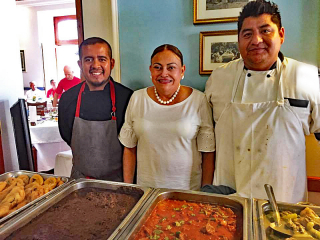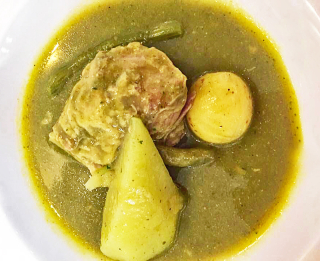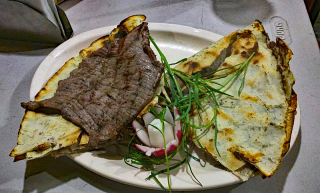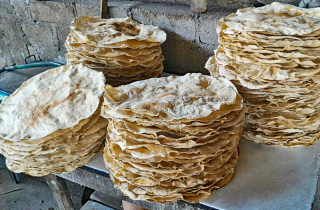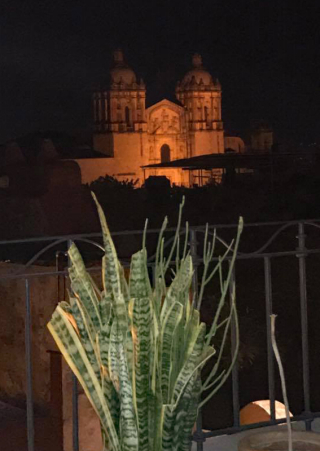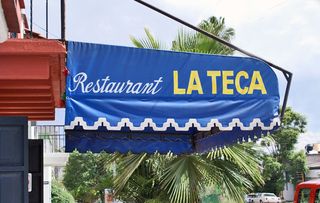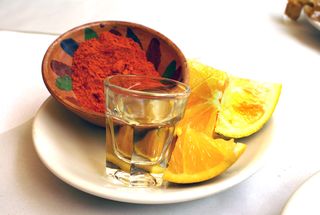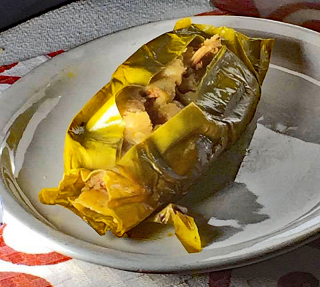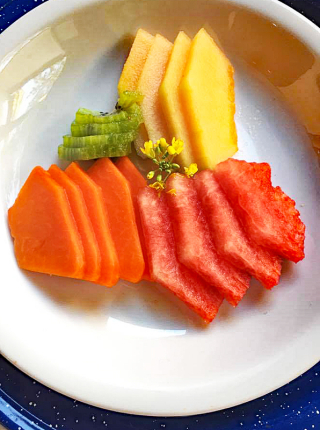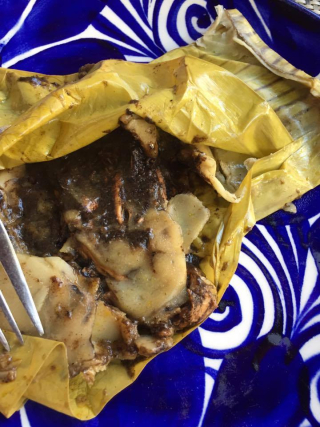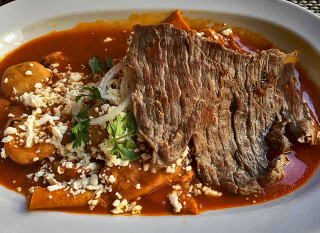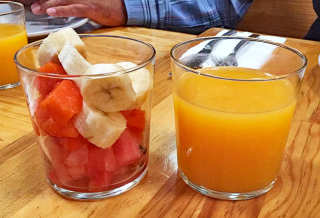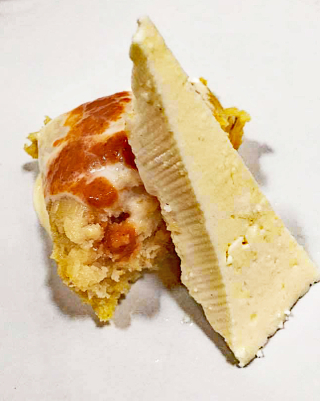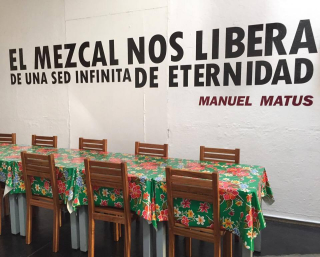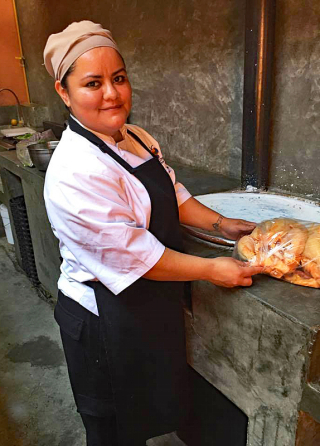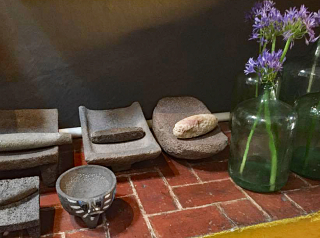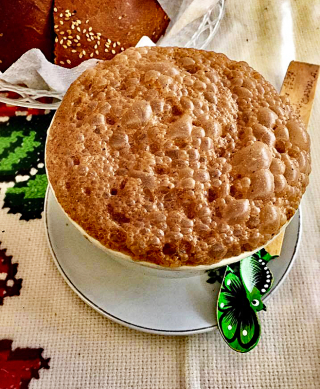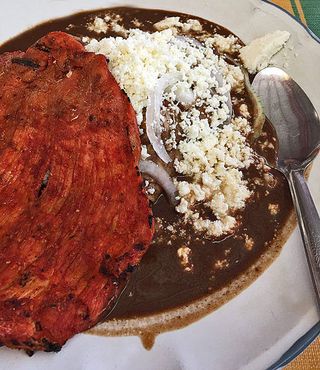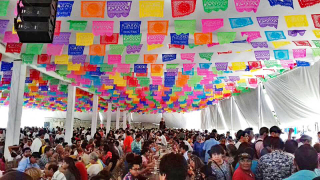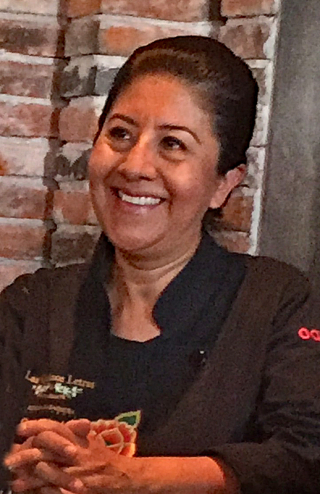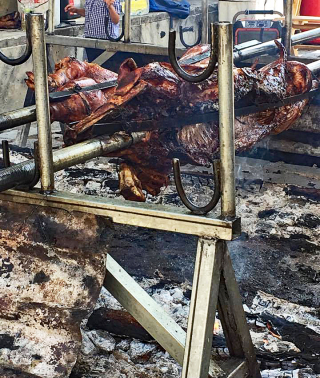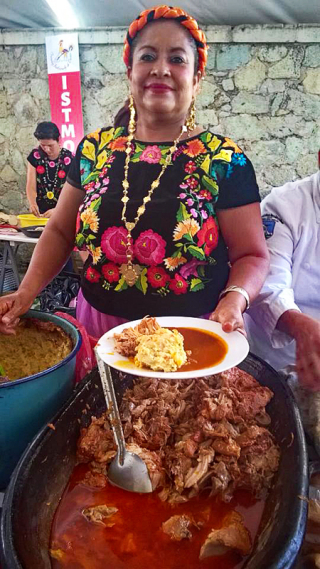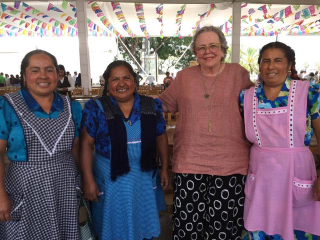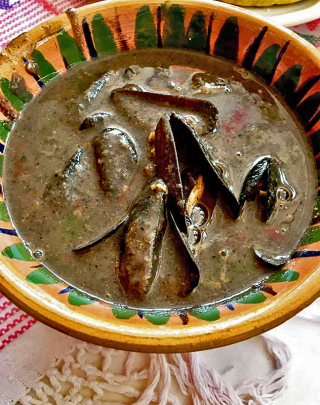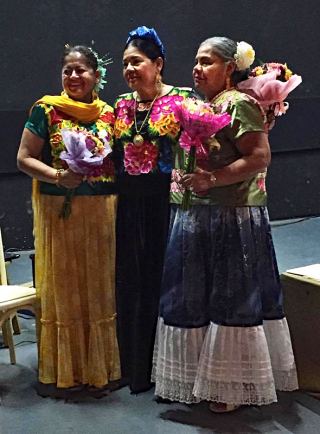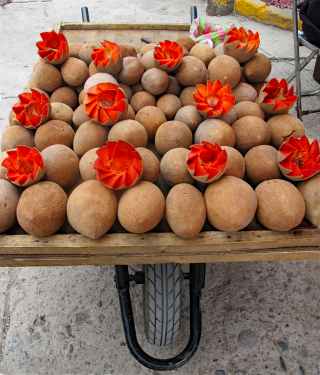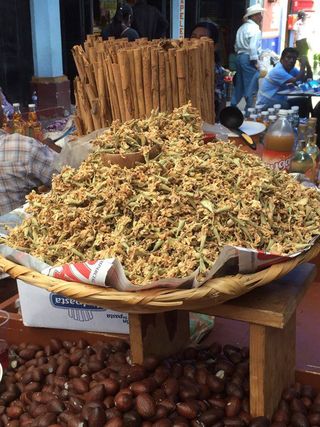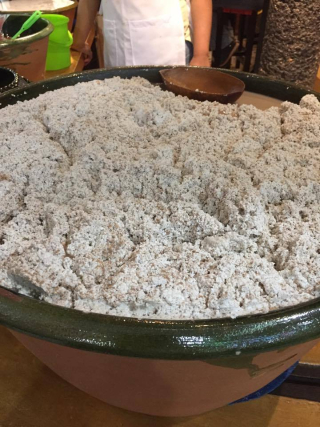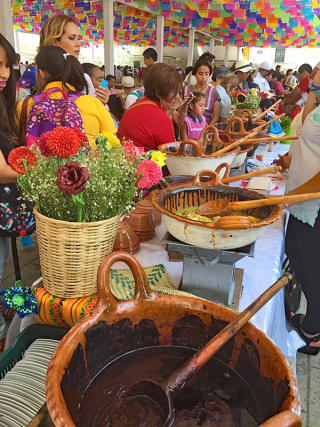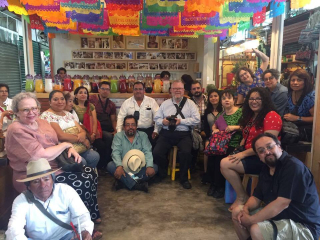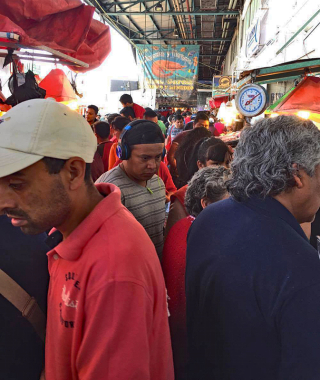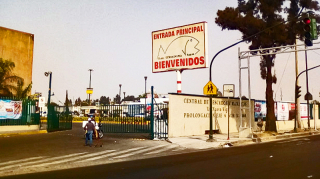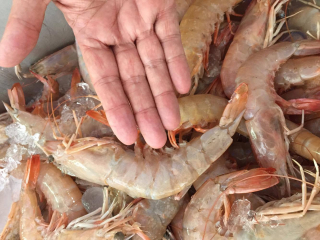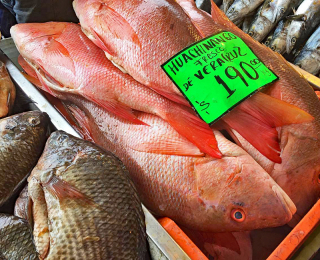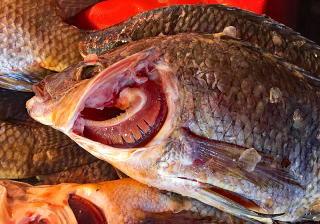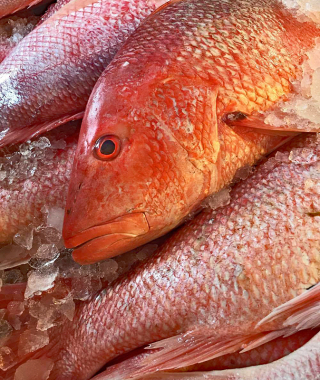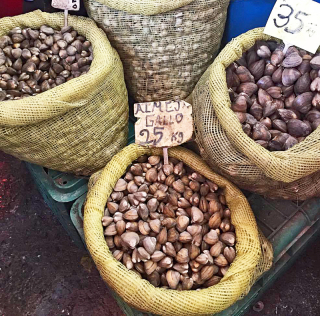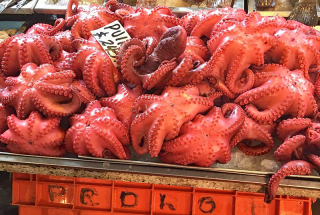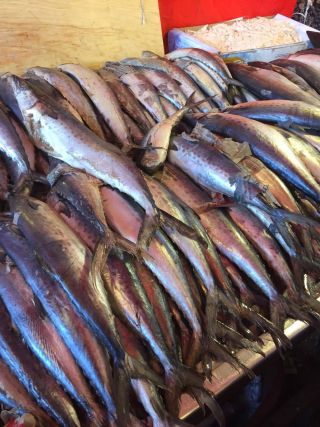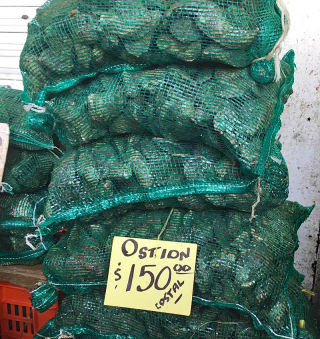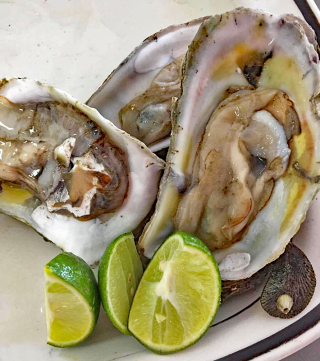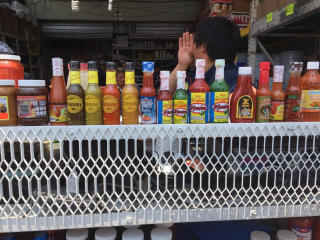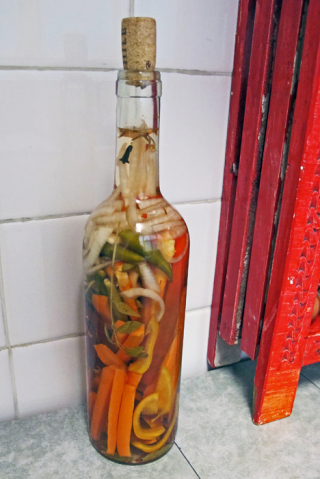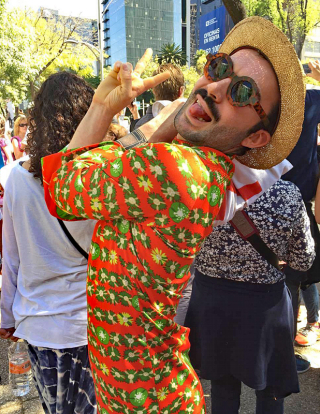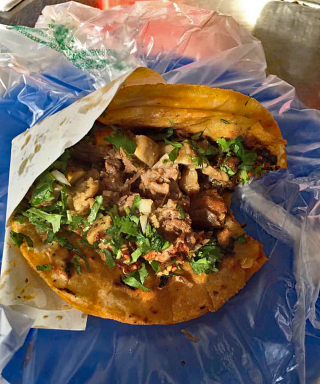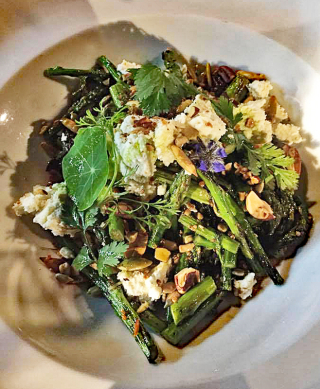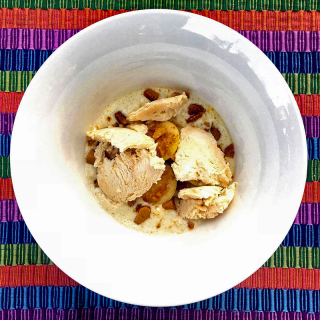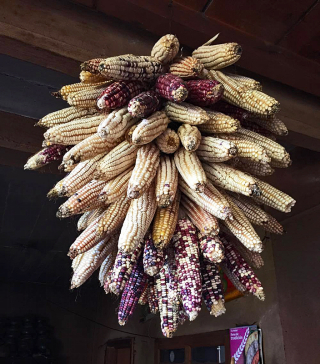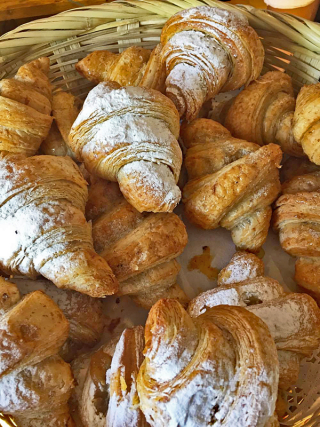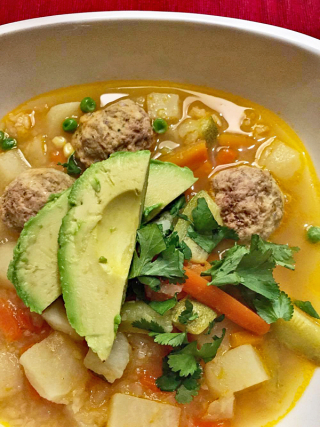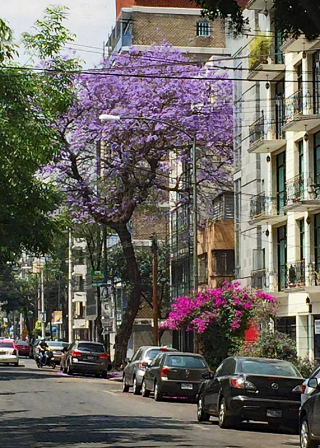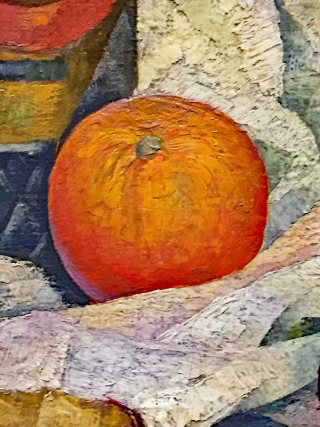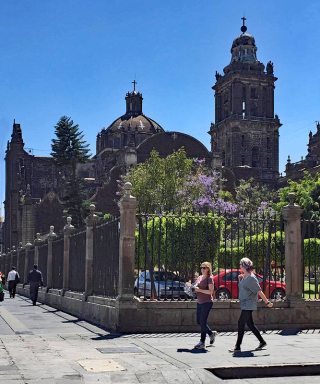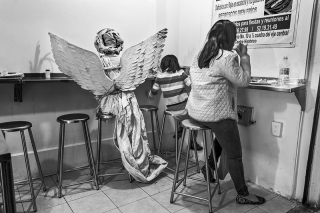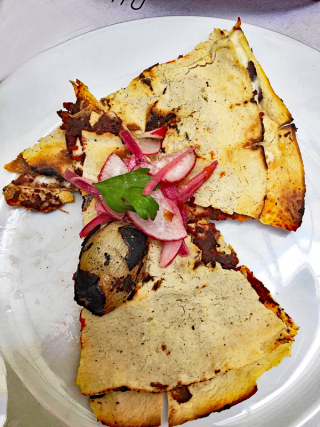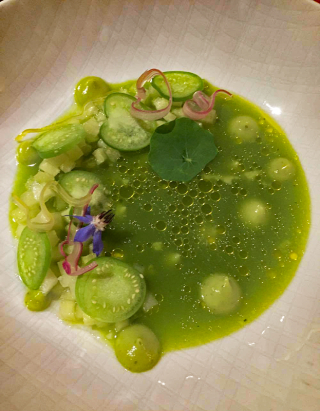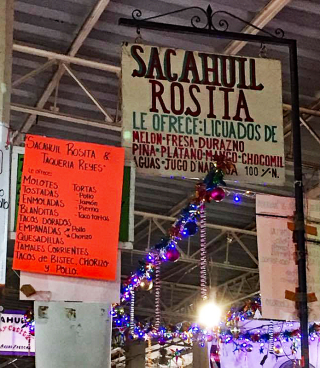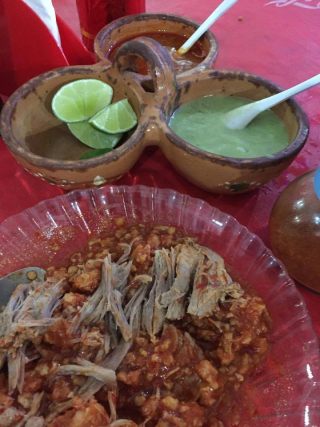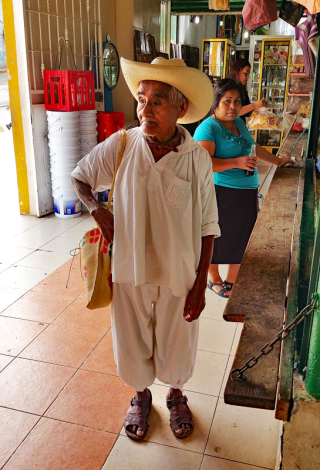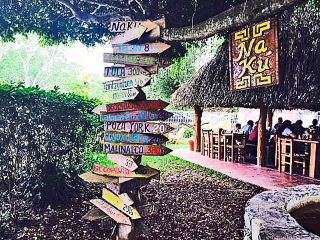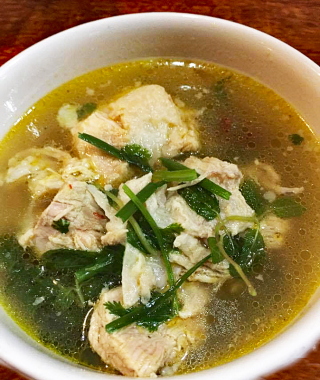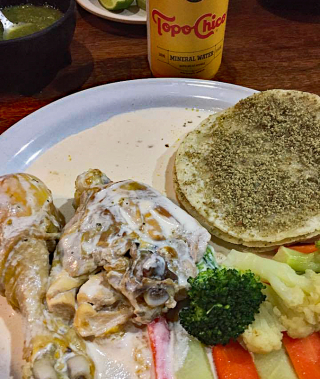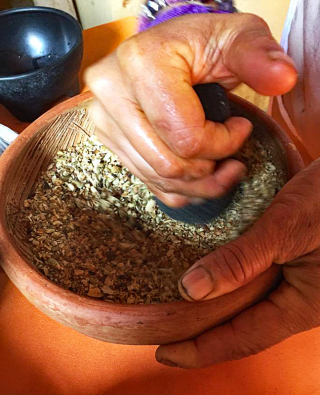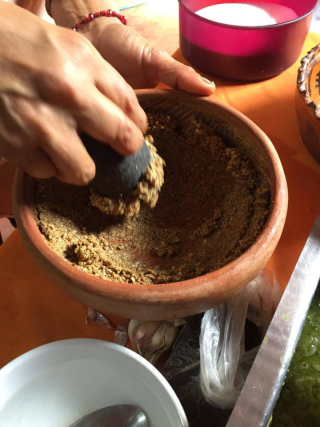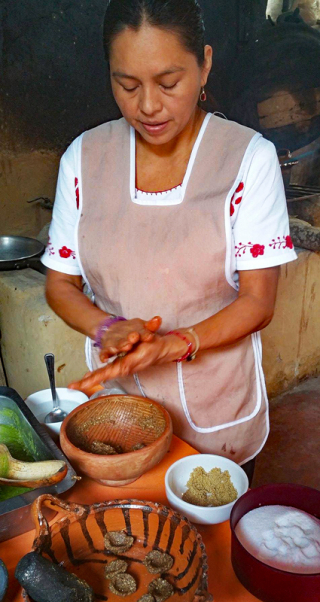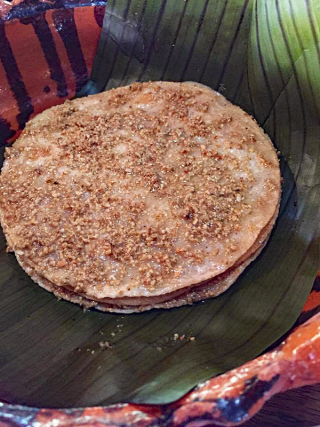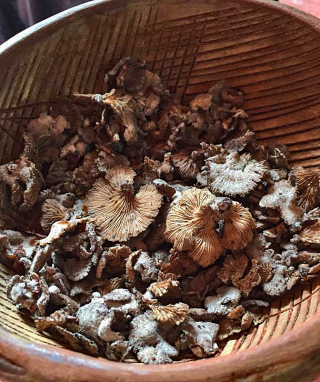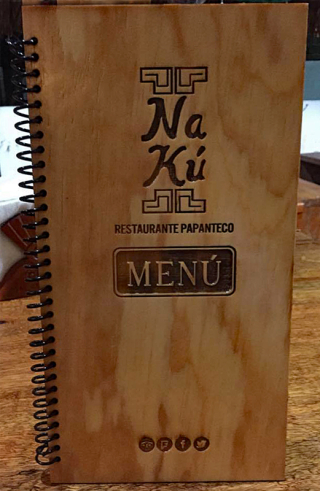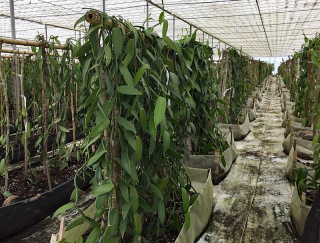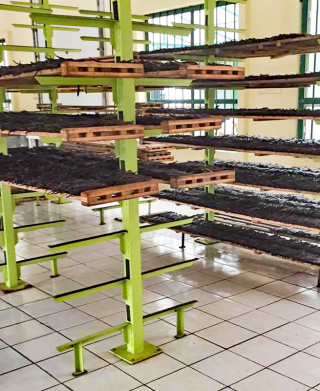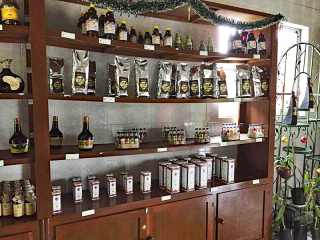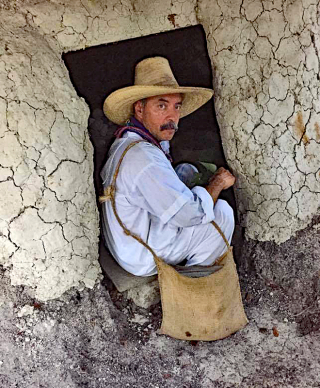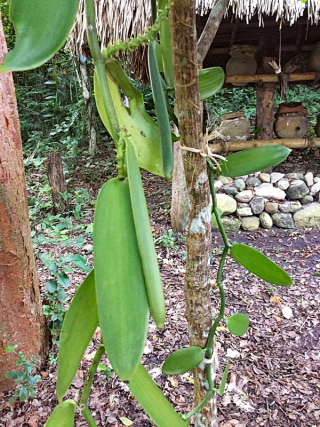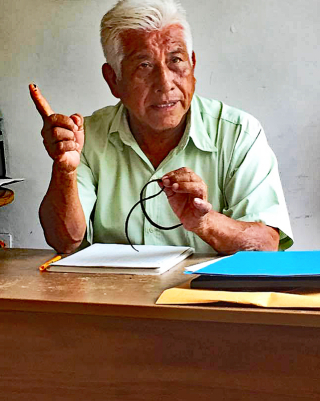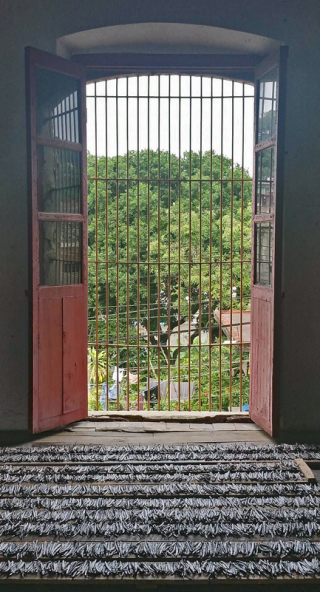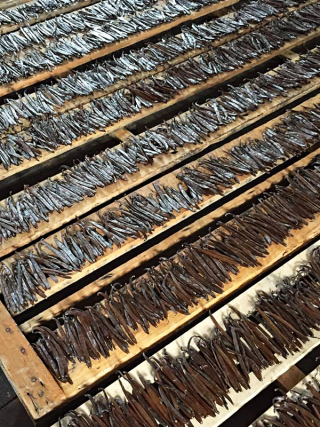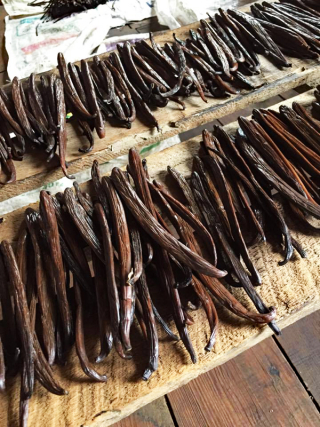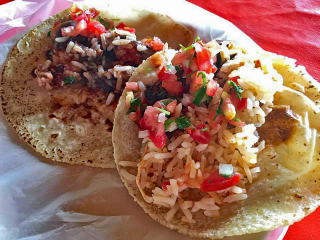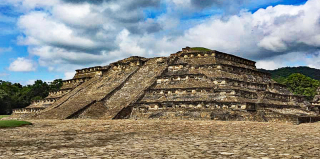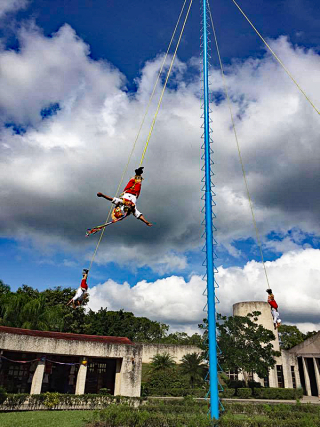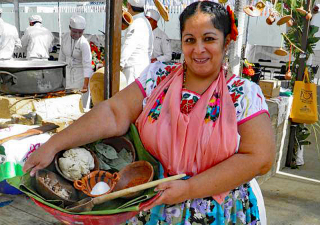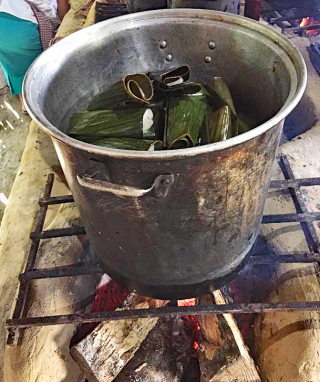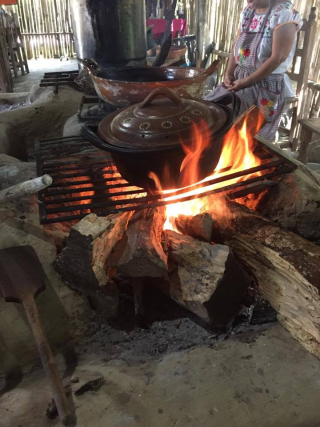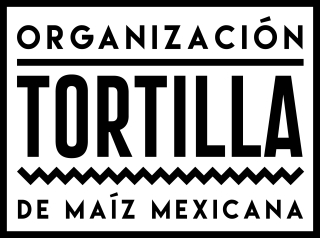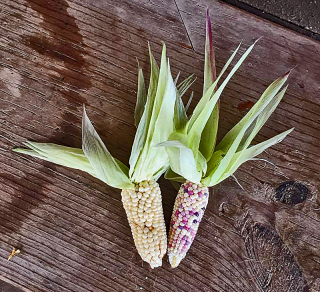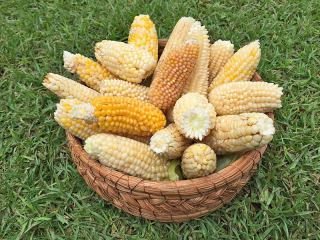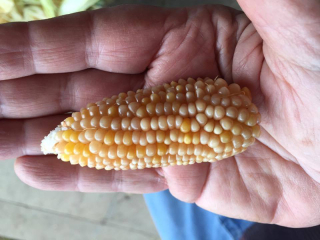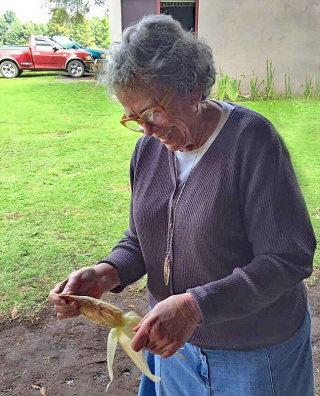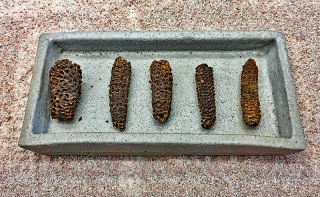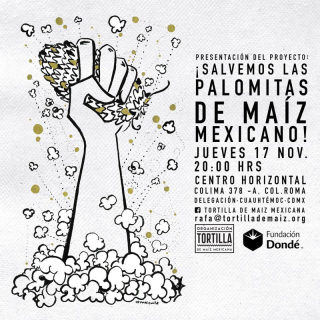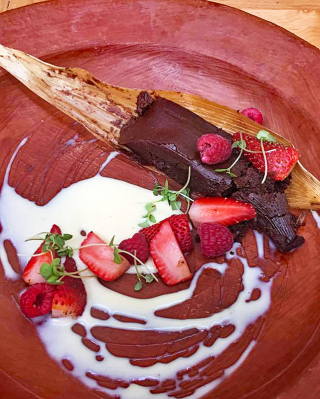
You've heard that old saying, "Life is uncertain, eat dessert first…"? Here we are, beginning at a meal's sweet ending with a tamal de chocolate (chocolate tamal) from Pasillo de Humo in Mexico City. I've eaten others in the city that don't quite make the cut, since most are dry and not very chocolate-y. This one, on the other hand, is more like a deeply rich yet still light-textured chocolate bar. Two thumbs up!
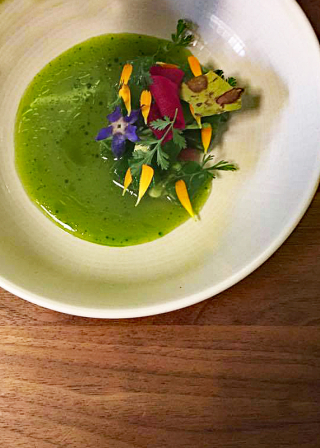
In December 2016, it was my privilege to enjoy comida (Mexico's main meal of the day) at Restaurante Quintonil, invited by my dear friend, Pamela Gordon. The Polanco restaurant, a superb effort by Jorge Vallejo and his team, met and surpassed our hopes and expectations. What a marvelous treat! This charming amuse was only the beginning of a delicious meal.
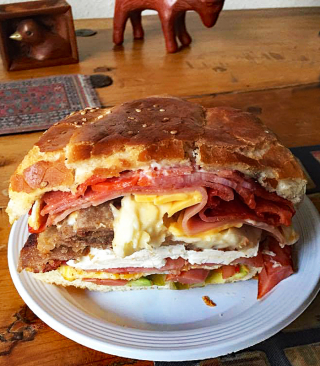
Across the street from my Mexico City home is a tiny and extremely tempting torta stand. Half of one of these tortas (Mexico's iconic sandwich) is almost enough, but the flavors are such that it's hard to stop without finishing the whole thing. This particular sandwich is a torta cubana (Cuban style); if you look at the bottom corner of the left side, you can see the tell-tale sign of its identity: a torta cubana in this part of Mexico almost always includes a cut-up hot dog!
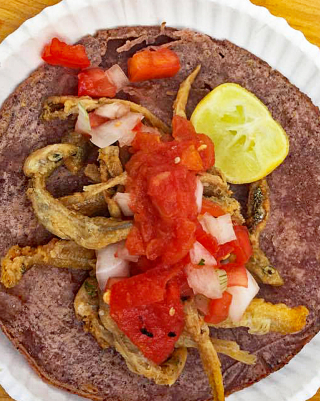
My wonderful friend Rosalba Morales Bartolo, a skillful and well-known cocinera tradicional from the state of Michoacán, prepares tacos de charales (tiny fish) that changed my thinking about these lake fish. There was a time when I wouldn't eat charales: they were inevitably extremely 'fishy' and very badly prepared. When I met Rosalba, she insisted that I try just one of hers. What a difference! Rosalba pulls them from Lake Pátzcuaro in nets and uses a generations-old family method of preparing them; hers are cleaned and scaled, dusted with flour, fried in fresh oil, and are incredibly delicious. Whether I eat them as a a finger-food snack or as a taco, they're one of my favorite delicacies!
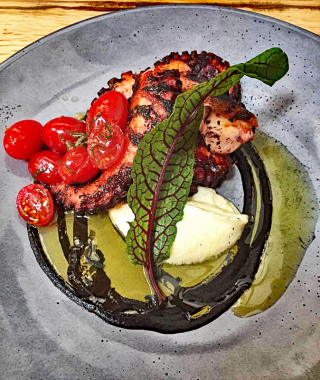
From Restaurante Mia Domenicca in Mexico City's Colonia Roma, this grilled octopus is accompanied by its own ink, caramelized grape tomatoes, puréed cauliflower, and a mirror of fresh green olive oil. The inventive dish is beautifully cooked, beautifully presented, and a wonderful mix of flavors and textures.
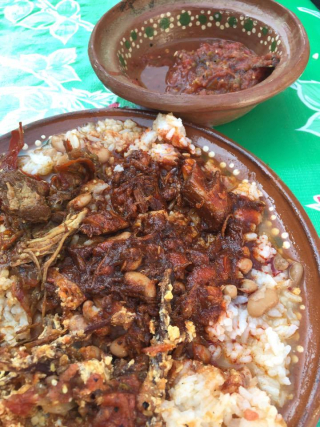
From Restaurante La Tradición in Pátzcuaro, Michoacán–and from the hands and heart of my beloved Victoria González, another of Michoacán's extraordinary cocineras tradicionales–a plate of her fabulous aporreadillo, beans, and rice. Aporreadillo is a specialty of Michoacán's Tierra Caliente; doña Vicky hails from Apatzingán, in the heart of those hot lands, and her preparation of the dish is exquisite. Made of dried beef, scrambled egg, tomatoes, and a delicious broth, I like it best served over rice.
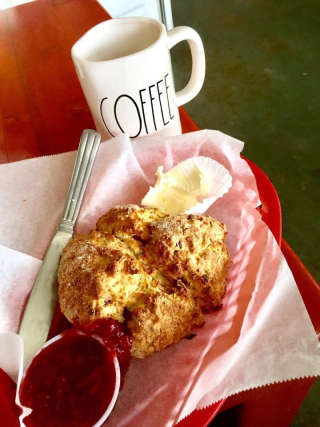
Wait, this isn't from Mexico City! But let me introduce you to one of the magnificent scones from Rebecca's Coffee House in the South Park neighborhood of San Diego. Rebecca Zearing and her crew have been turning out hot scones, freshly made marmalades, and excellent coffee (among other things) for the last 25 years. When Mexico Cooks! was in San Diego in February, we were lucky enough to catch Rebecca in the shop with an almost-ready batch of scones in the oven. I'm not sure which was better: the welcoming hug from my old friend Rebecca, or this uniquely delicious scone! When you're in San Diego, don't miss going.
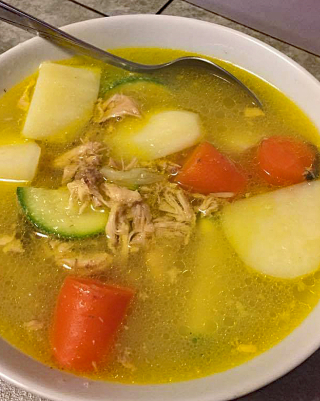
Mexico Cooks! is particularly fond of Mexican caldo de pollo: chicken soup like I hope your Grandma used to make. Based on a rich, long-simmered chicken broth, this soup is full of vegetables (in this batch: carrots, calabacitas [like zucchini], green beans, and potatoes). At table, a big squeeze of limón (Key lime), a dollop of whatever might be your favorite salsa picante, and some coarsely chopped cilantro give this dish a zing that you will crave after the first taste. Add a big spoonful of Mexican red rice to the bowl; that's how we eat it in Mexico for simple, home made comfort.
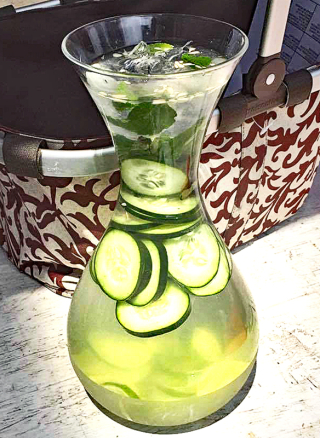
Mexico is rightfully famous for its aguas frescas (fresh fruit waters), but this is one you might not yet have tried. Fresh cucumber combines with fresh mint and a little sugar to make a wonderfully cool and refreshing summer drink. This particular agua de pepino (cucumber water) slaked our thirst at a culinary event at Mexico City's American School. It was just right for a very warm spring day–and it looks so pretty in its jug.

One last dish: coctel de caracol, pulpo, and camarón (a cocktail of sea snail, octopus, and shrimp) from the incredible Ensenada cook Sabina Bandera, well-known everywhere as La Guerrerense. Served in an immensely flavorful cold broth made from the seafood cooking stock, tomato, chile, and cilantro, this cocktail is perfection pure and simple. I'd met doña Sabina a few years ago, but this past November was the first time I'd been able to taste her heavenly seafood tostadas, salads, and cocktails. If you're ever in Ensenada, Baja California–or if you hear that she is going to be cooking where you are, hurry. Get there. You don't want to miss these briny wonders.

Mexico Cooks! with Sabina Bandera, La Guerrerense.
Looking for a tailored-to-your-interests specialized tour in Mexico? Click here to see new information: Tours
